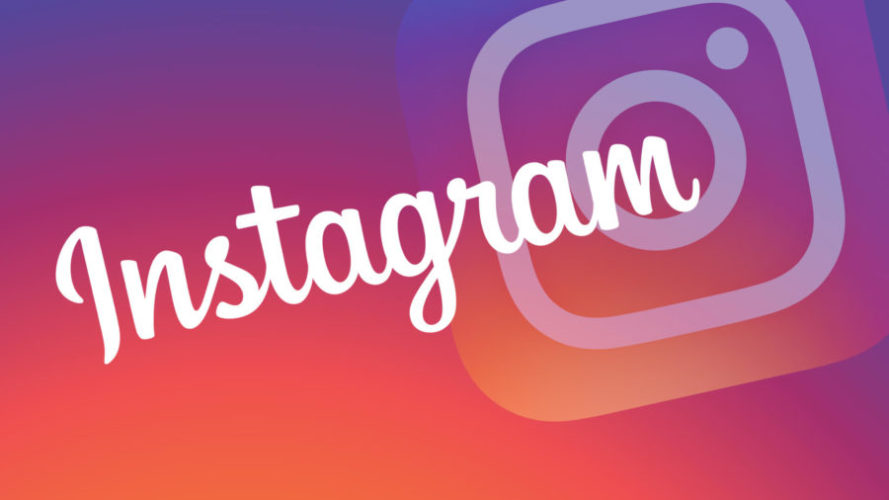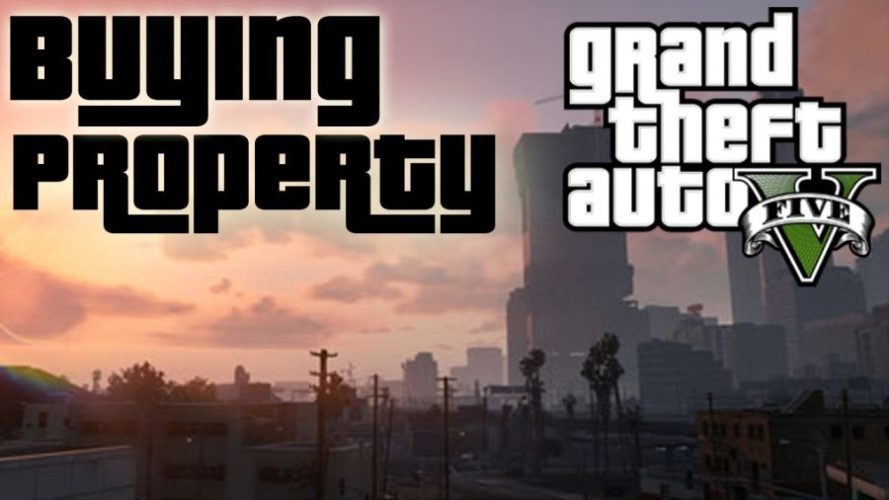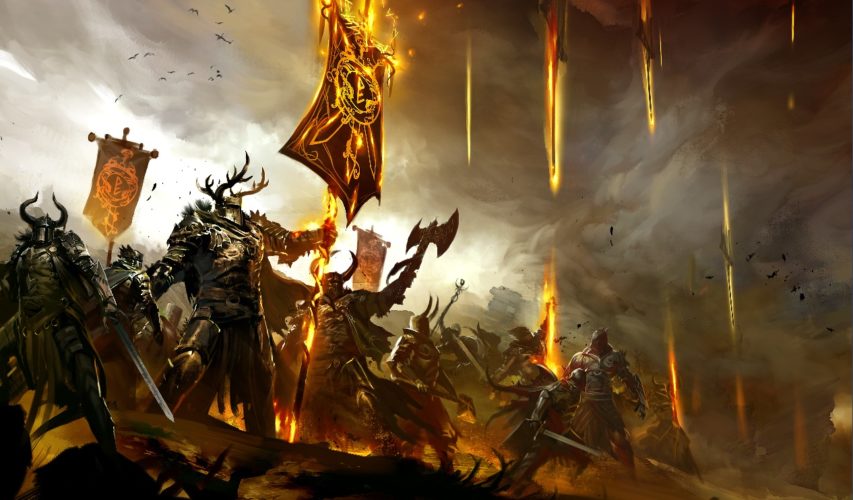Tech
The Branded Game App As An Effective Marketing Channel

When you get it right, game apps can be extremely lucrative – although not in the ways you might think. When a game or game suite suits the style of an online business, not only can you introduce your brand to a huge niche group of online gamers, you also get to show off your creativity and willingness to go beyond the basics for your existing and future customers.
Global consumer spending on mobile apps was up 30% in 2020 – reaching US$111 billion in the fourth quarter of last year. Both iOS and Android apps have enjoyed an upward trend; with lockdowns continuing, we can expect that curve to rise. Furthermore, as technology improves the opportunities for brands to create their own online games and associated apps has become a viable and cost-effective marketing strategy for businesses large and small.
Of course, unless your company can create the equivalent of Arena of Valor, Candy Crush Saga, Rise of Kingdoms and Pokémon Go, you can’t expect a high ROI. You will only get returns on an app that is not connected to a website if your offering excites the masses and is a unique experience. Adding an app to accentuate your brand, however, has many advantages.
It is easy to match game apps to your niche. You can include CTAs within each app that encourage your users to visit your website, leave feedback and comments, and join or form appreciative social media groups. As the top marketing strategies of 2021 are a strong social media presence on multiple networks, high authority, and unique, engaging content, creating a branded game app ticks at least two of these crucial boxes.
Who Downloads Gaming Apps?
Why would I want to limit my target market to the 16 – 24 age group?
There’s a huge myth that game apps are only downloaded by younger age groups who do not have the purchasing power of the over 30s. In truth, mobile app users are spread across most age groups; the average age of the mobile gamer is just over 36 years of age. For many business owners, this is a surprising statistic. Even more surprising is the fact that nearly a third of game applications are used by the over-45s niche.
Gender has very little effect, too. Over 46% of gamers are female – and these tend to play slightly more often and for longer periods than males. The myth that young males with very little income are more likely to purchase your branded app is just that – a myth. Chances are, your own phone – whatever your age – has at least a couple of games on it that you turn to when travelling, relaxing, feeling bored or in the mood for a little competition.
How Expensive Is App Development?
You don’t need to invest serious sums into app development – as long as you are happy with using templates. Mobile app builders that do not require the user to have coding knowledge can be found all over the Internet. Select low-code or no-code application development platforms and the majority of the work is done. Bear in mind that many of the lower-priced online app developers charge a percentage of the revenue when you implement their templates. If they charge a higher monthly rate without asking for a percentage, royalties may still be charged via in-app monetization features. While these cut into your app ROI, this visual, fresh and fun channel has the potential to boost a broad range of marketing strategies.
Be prepared to spend at least US$50 per month for each game if you create an app using a template. Lower-priced plans will limit branding capabilities. Most build features include a set or unlimited number of worlds and scenes with or without splash-screen customisation (a priority when linking a game app to your business). Other essential features include app launch on mobile and desktop devices, integration with monetization partners, analytics and in-app purchases. Take your time to read the fine print and compare services. There is no need to spend thousands on a custom app unless you own a multinational company.
Hiring a professional service to develop a unique app means costs run into thousands of dollars. It is not unknown for popular games to have required investments of a quarter of a million US dollars. Most of these are revenue-based and create returns through ads. For example, Candy Crush Saga gives players the opportunity to view ads for free plays and tools. When developing an app to support an existing online business, ad revenue should be very limited. This means a pure app to revenue ROI is low; costs are reimbursed through app-related brand awareness and increased traffic.
Using freelance services offered by individuals may cut costs but be sure to research experience levels and ask for a portfolio of previous work. Agencies that offer turnkey app development packages ask high prices but generally produce a finished product that works well according to individual specifications. Again, portfolios of previous apps should be available to any agency’s potential customers.
How Long Before I Get Results?
With the right game, design, technology and marketing, there’s no reason why you shouldn’t start to see a return on your investment within 3 to 6 months. For many budding entrepreneurs, this is too long. And if you are thinking of ROI on app development costs, it is unlikely you are implementing your brand-focused game with the correct intentions.
Your app should be part of a marketing strategy for your existing service or business. It is a traffic provider, a brand advertiser and a source of data. It is a means of existing and potential customer engagement, a platform that informs individuals about your niche topic, a way to get similarly-minded individuals in contact with each other, and an additional but often ignored media channel.
This means branded game app results have the potential to affect all aspects of your business plan. However, you won’t be able to point your finger to one specific monetary source and thank your stars you decided to develop a mobile game.
The first statistic you should bear in mind when thinking about developing an app is that paid apps make up less than 4% of total downloads. Nearly 97% of downloads are comprised of free apps, with or without in-app purchasing. There is very little point in developing a paid app unless you are a known, trusted and popular game brand. Even low-priced apps turn off millions of potential users. In short, your branded app must be free.
Planning Your Game App
Naturally, planning which game to use is central to the success of an application. There’s no point designing a shoot-em ‘up game for Amnesty International unless the goal of your marketing strategy is to get people talking about your brand and you don’t care what they say about it. For most of us, this is not the case.
It takes a creative mind, a game planner and a marketer to come up with a winning combination of design, game plot and in-app branding. For businesses that sell new designs every season, integrating the latest fashion, furniture or decoration into gameplay means regular maintenance and update costs. Dressing a personalised virtual model in the clothes your shop sells is a costly undertaking.
Picking a core feature of your service that remains relatively stable drives development costs down. If you supply computer parts, offering a “build your own computer” app that encourages players to use a mix of cheap to expensive generic parts linked to equivalents offered by your company would greatly minimize maintenance costs. Integrating in-app monthly competitions for best performance-to-cost solutions for office, home and professional gamer, for example, could be hosted on social media and linked to your webshop. Your game planner must not only be thinking of a game that is fun and runs smoothly, he or she must continuously incorporate marketing tactics. The best apps are the result of a close working relationship between designer, developer and marketer.
If you sell pet supplies, an app that tells people who are thinking about getting a dog which breed best fits in with their lifestyle and budget has already been done many times by your competition. However, allowing your users to select high activity, medium activity and low activity breeds and then simulate a week of dog-related duties in an engaging and fun way could give your app the edge. At every stage, your brand needs to be visible – either your company logo or, at minimum, your brand colours.
Marketing Your Game App
You don’t need to research your app market in the same way as you have researched your target audience – the gaming app niche is immense. It is very likely that a well-designed game will be downloaded by people far outside the borders of a company niche. Not only does this expand your potential public, it also brings in data from underanalyzed groups. With gaming apps, you have the opportunity to tap into one of the largest global niches.
To get a slice of that market, you need to invest in every marketing channel. This additional cost is rarely included in app builder packages, except in terms of ads. As ads can be off-putting (just read Google Play and App Store game reviews to see how many people complain about excess advertising), limiting this form of monetization is a good idea – especially when you are not linking your app to a pay per click website.
As a branded app is a marketing strategy, it must link to your online presence in the maximum number of ways. If an app user can’t be directed to your website from core pages, something is wrong. If your app can’t publish high scores or player stats to social media profiles with the click of a button, you are not making use of your app’s marketing powers. Influencers should be playing your game online and telling their followers where to find it. Link partners should be redirecting to both your web pages and your app’s Google Play and App Store page. Again, your app is not a service or a product, it is a marketing channel that supports your true online presence – your website.
While website marketing 101 places SEO and content in pole position, such strategies are slow. The inclusion of a social media presence, partner site backlinks, branded app and influencer support are quicker ways to get signups but no-one should ignore the die-hard search engine optimisation route. Getting your app and website added to review sites will make a difference…as long as the feedback is good, of course.
The quickest way to get traffic is to pay for it. And practically every new business invests in regular paid traffic deliveries from professional traffic providers. All of the best web traffic services will be able to supply targeted human traffic from gaming communities for your app, as well as the target niches that best describe your service, from sports enthusiasts to couch potatoes. By forwarding their own website visitors to your online presence – your website – there is a high chance they will – at minimum – navigate your pages. Should you provide sufficient reason for engagement, this investment will most definitely pay off. When targeting the gaming community, you should have these paid visitors redirected to a landing page that advertises, describes and links to your branded app.
When you buy targeted website traffic from a reputable provider, results are immediate. This makes paid traffic ideal as an early marketing campaign. Ordering 250,000 monthly US visitors from both your target audience and the gaming niche at ultimate Web Traffic costs just over $700 per month.
As gaming communities are higher-converting in terms of signups than other eCommerce groups, even a low conversion rate of 2% would provide 5,000 new app downloads every month. These numbers increase at a steady rate and give slower marketing strategies the time they need to catch up. Very few online businesses survive their first months – without paid website traffic, such statistics would be even more uninspiring.
A New Branded App – Small Investment, Broad Return
Cutting corners is usually a prerequisite when it comes to developing a branded app when you’re not one of the big brands; however, app investments bleed returns into every marketing channel.
While it’s tempting to go for the lowest app dev plan, consider your marketing budget first. If you already spend a large percentage of your monthly budget on marketing, why isn’t a proportion of this being released to open up a fresh, exciting, visual and fun channel?
The upfront costs of a new app are not so high when compared to the combined price of continuous fresh content, popular keywords, ads, paid traffic, social media accounts and video footage. At the same time, the excitement a unique game can generate – not to mention its capacity to ensure people know about your brand in a less in-your-face way – adds value to your customers.
Start envisioning what parts of your business could be represented in a fun, competitive way. With this as a starting point, it won’t be long before your business can add this rapidly-expanding channel to its increasingly successful marketing funnel.
Tech
Godot Engine vs Unity: Which is Best in 2025

Key points:
- With its lightweight, free engine and simple learning curve, Godot is ideal for 2D and independent games.
- Unity’s advanced graphics and broad product store make it an excellent choice for massive projects, 3D, and virtual reality.
- Depending on the project’s needs, choose between Unity for high-end development and Godot for simplicity and cost-effectiveness.
Introduction
Game development has come a long way, and today, developers have access to powerful engines that allow them to create immersive gaming experiences. Among the most popular choices are Godot and Unity. Both engines have grown significantly in recent years, making it more challenging for developers to choose the one that best meets their needs. Whether you are an independent company, an experienced team working on a big project, or an aspiring game developer, selecting the right engine is essential.
Overview of Godot and Unity
Godot

Godot is a free and open-source gaming engine that has become extremely popular because of its portability, simplicity, and adaptability. In addition to offering its scripting language, GDScript, and support for C#, C++, and VisualScript, it facilitates the creation of 2D and 3D games.
Key Features of Godot:
- Open-source and free with no licensing fees.
- Lightweight and optimized for low-end hardware.
- Strong support for 2D games with built-in tools.
- Scene-based architecture that simplifies game design.
- Growing community and frequent updates.
Pros:
- Completely free with no licensing fees
- Lightweight and fast
- Strong 2D game development tools
- Open-source and customizable
- Easy to learn for beginners
Cons:
- Smaller community compared to Unity
- 3D capabilities are improving but still behind Unity
- Limited third-party assets and plugins
Also Read: Is The Elder Scrolls Online Cross Platform in 2025?
Unity

A popular commercial game engine, Unity is known for its extensive tools, asset store, and compatibility across platforms. It is popular for studios and professional game developers working on significant projects.
Key Features of Unity:
- Advanced 3D graphics rendering and physics engine.
- Huge asset store with thousands of plugins and tools.
- Multi-platform support, including mobile, consoles, VR, and AR.
- Extensive community and official documentation.
- Strong support for large-scale game development.
Pros:
- Extensive documentation and strong community support
- Advanced 3D graphics and rendering capabilities
- Large asset store with many plugins and tools
- Cross-platform support, including mobile, console, and VR
Cons:
- Licensing costs for advanced features
- Requires more system resources
- The learning curve can be steep for beginners
Performance and System Requirements
Godot’s Performance
One of Godot’s biggest advantages is its lightweight nature. Because of its performance optimization, it functions flawlessly even on old hardware. This makes it perfect for 2D development, independent projects, and mobile games. Improvements have significantly increased Godot 4’s 3D capabilities in the rendering process, memory management, and GPU utilization.
Unity’s Performance
Because of its performance optimization, it functions flawlessly even on old hardware. This makes it perfect for 2D development, independent projects, and mobile games. Improvements to the rendering process, memory management, and GPU utilization have greatly increased Godot 4’s 3D capabilities.
Ease of Use & Learning Curve
Godot’s Learning Curve
Godot is known for its simple interface and process. Its scene-based design makes game production easier, particularly for beginners. Learning GDScript is simple, especially for people who know Python. Because of this, beginners may easily prototype and create games without having to deal with complicated syntax.
Unity’s Learning Curve
Unity is more complicated because of its many features and dependence on C# scripting. Although the learning curve may be higher for beginners, Unity provides thousands of tutorials, classes, and documentation to help creators become proficient with the engine. Professional developers use Unity because of its extensive features despite its complexity.
Also Read: Solitaire Grand Harvest Free Coins (2025)
2D & 3D Game Development

Godot for 2D & 3D
- 2D: With integrated support for tilemaps, pixel-based rendering, and animations, Godot is a powerful tool for 2D game development.
- 3D: With improvements, Godot’s 3D engine still lacks several of Unity’s advanced rendering features.
Unity for 2D & 3D
- 2D: Unity supports 2D development, but its engine is heavier than Godot.
- 3D: One of the most excellent tools for creating 3D games is Unity, which has realistic shaders, physics, and lighting.
Licensing and Cost
Godot’s Pricing
- Completely free and open-source.
- No hidden costs or licensing fees.
Unity’s Pricing
- Free for small developers but has limitations.
- Paid plans (Unity Pro, Enterprise) provide full features.
- A revenue-based pricing model was introduced, charging developers based on revenue and installs.
Community & Support
Godot’s Community
The open-source nature of Godot has allowed its community to expand quickly. The engine receives contributions from developers worldwide, who improve and expand its features. As a result, a passionate and supportive community has emerged, actively exchanging materials, tutorials, and information.
Discord channels and forums also provide developers with a simple way to communicate and ask questions. Users of all skill levels can obtain support through the official forums, community-led projects, and the Godot Q&A.
Unity’s Community
One of the most prominent and well-established game development communities is Unity. With millions of users globally, it provides a broad support system that includes Unity Learn courses, official forums, and documentation. Due to the large community, developers can rapidly solve everyday problems.
Third-party platforms provide a wealth of lessons, assets, and plugins, along with Unity’s official support. The Unity Asset Store offers pre-made tools to expedite project creation, which improves development.
Also Read: Best and Safe ROM Sites to Download ROMs
Asset Store & Plugins
Godot’s Asset Store
Although smaller than Unity, Godot’s asset store continues to grow. The majority of Godot’s assets are created and shared by the community for free because it is open-source. This makes it a great option for independent developers who wish to access resources without paying additional fees.
Sprites, shaders, scripts, and plugins made especially for Godot’s engine are among the many available assets. Developers can readily change or produce their assets, even though the selection is less extensive than Unity’s. The store’s community-driven model guarantees a constant flow of fresh content.
Unity’s Asset Store
One of the largest marketplaces for game development is Unity’s asset shop. It provides thousands of 3D models, sound effects, animations, and scripts for free download or purchase. By incorporating pre-made components into their projects, developers can expedite their workflow.
The store offers plugins that increase Unity’s capabilities in addition to assets. Developers can quickly and easily create intricate games with tools like physics engines, AI behaviour packs, and custom shaders. Due to its extensive selection, it is helpful for beginners and professionals alike.
VR & AR Support

Godot for VR & AR
Godot is still in its early stages compared to other engines, although it does somewhat support VR and AR. However, there is little official support for the plugins and technologies that the community has created to enable VR capability. Because of this, it is less suitable for developers who want to produce immersive experiences of superior quality.
While essential VR development is possible, performance optimization and advanced features require additional work. The engine lacks built-in AR tools, making it more challenging for developers to create mobile AR applications. However, as Godot grows, improvements in this area are expected.
Unity for VR & AR
Unity is a popular VR and AR engine in the simulation, gaming, and educational sectors. It has integrated support for popular AR systems like ARKit and ARCore and VR headsets like Oculus, Vive, and PlayStation VR. Because of these features, Unity is a great option for developers working on immersive projects.
Unity offers powerful development tools and frameworks to expedite the construction of VR and AR, as well as hardware compatibility. Developers may design extremely engaging experiences using features like hand tracking, spatial mapping, and real-time rendering. With Unity, beginners and professionals can create excellent VR and AR apps quickly and easily.
Also Read: How Many GB is Valorant: Storage Guide
Best Engine for Different Use Cases
| Use Case | Best Choice |
| 2D Indie Games | Godot |
| 3D Games | Unity |
| Mobile Games | Godot |
| Large-Scale Games | Unity |
| VR & AR | Unity |
| Open-Source Development | Godot |
Conclusion
Godot and Unity have their strengths, and the right choice depends on your project’s needs.
Godot is a great choice for individual projects, 2D games, and developers looking for a free solution. It is also a great option for those new to game production because of its open-source nature, simple programming, and lightweight design.
However, Unity remains the top option for VR experiences, 3D games, and large-scale projects. It is appropriate for professional developers and businesses because of its powerful rendering engine, extensive asset store, and active community.
In the end, both engines are superb on their own. Try both engines before deciding to see which best suits your objectives for building a game.
Featured
Horse Racing Games For iOS

Horse racing is a globally spread sport with billions of fans worldwide. The thrills of the races and the excitement of the betting make horse racing quite popular among adrenaline rush seekers.
However, unlike other sports like football or basketball that you can actually try in your backyard, becoming a racehorse rider is out of reach for most people. But all hope for our fellow race lovers is not lost and the gaming world comes to the rescue.
We are talking about horse racing simulation games where you can pick or breed your own horse, participate in online racing tournaments, earn prestige, take care of your horse, and much more.
Horse racing video games are perfect when it comes to getting the bigger picture of the sport and familiarizing yourself with other aspects apart from racing, like stable management, breeding, and finance management.
On top of that, horse racing video games can help you understand how the sport works, which may help you with the next bet you make on TwinSpires.
Fortunately, there are plenty of horse racing games for iOS, and in today’s article, we will highlight some of the best that you should try.
Rival Stars Horse Racing
This is a game made by a legendary horse race video game developer called PikPok and it is without a doubt one of the best horse racing games available for iOS right now.
The graphics look incredible for a mobile game. They are quite realistic, and the horse movement and the design of the tracks also give you the feel that you are participating in a real-world race.
Rival Stars Horse Racing has quite a fast pace, where you can complete some quests and upgrade your stable, but the focus is on the races, as it should be.
When we talk about the racing part of the game, every racetrack that you unlock offers something new. You get to race at different lengths and surfaces. But let’s focus on the important part, race mechanics.
You can steer the horse, brake, and activate their sprint ability. The horse’s performance is based on multiple factors such as ground consistency, position, race length, previous races, and much more.
Rival Stars Horse Racing also has a quite good breeding, training, and managing system. On top of that, there are many different horse coat colors and breeds. Unlike other games like Zelda where you can get a gold horse, Rival Stars Horse Racing focuses on realism. All of the horses have natural coat colors and traits.
You get to collect or breed horses, transform foals to feed, and upgrade facilities to unlock more options to progress.
The only thing that is missing from the game is the audience on the races since the race courses feel a bit empty with nobody around.
Horse Racing Manager 2024
This is a game that has a rather different approach than Rival Stars Horse Racing. It is focused more on the managing part of horse racing rather than on the actual gameplay and racing. You are in control of your business operation and your goal is to succeed in the world of horse racing and earn money.
You don’t have an impact on the races, and you cannot control your horse. The races are simulated, and the outcome depends on your horse’s stats and abilities.
That’s why horse training, and breeding a champion horse play a really important role in the game.
The best thing about Horse Racing Manager 2024 is the ability to race online. There are live PVP races that occur every 5 minutes and everyone can participate in them.
This is the perfect game if you want to learn what’s happening behind the curtains of horse racing as a sport. You are in control of your breeding rights that you can sell, as well as the age and career path of your horse.
It is an interesting game, especially for those who are not afraid of data and analysis.
iHorse Racing
This is a similar game to Rival Stars Horse Racing but with worse graphics, and fewer options. This game has multiple features like horse training, stable management, horse auction, race entries, CLU-jockey hiring system, and world jockey ranking, and you can connect your Facebook profile to invite friends.
To be honest, the graphics and gameplay of the game are fun and engaging, but I’d still go for Rival Stars Horse Racing, especially if you like a more realistic horse racing game.
Pocket Stables
Let’s drop down all the realism and focus on some retro 2D gameplay. For all retro game lovers who have a passion for horse racing, Pocket Stables is just the perfect game. At first glance, this game might look simple, but it actually has many features that make it even more fun.
For starters, you can build training facilities where you can increase your horse’s stats. Additionally, not all horses are the same and your goal should be to find a horse with the right balance of speed, stamina, and intensity.
As you win races, you’ll receive prizes, that can be used to upgrade your stable and give you better ways to breed a faster horse.
It’s fun, casual, and quite cute. Plus, you get to build your horse racing community and hire people that will take care of your stable.
Tech
The Importance of Keeping Up With Technology

Technology is ever-changing. There are so many new things being introduced every day that it can be hard to keep up with all the latest trends. The way technology has changed and evolved has impacted a lot of areas. No matter what business you run or even if you do not run a business, your day-to-day life has been impacted by the introduction of technology.
I didn’t even know that services existed that gave you quick online loans for your short term needs. For me, loans meant tedious paperwork and days of back and forth with the bank. Every day I find a service that makes life easy, and it blows my mind.
Businesses that are updated on new technologies and integrate them into their workflow are often more efficient and keep up with the changing market, and this helps them be the most successful. Adapting to the new technologies makes production easier and also lets you provide your customers with a better service.
Being one of the first groups to apply new technologies to your business will also help you stay ahead of competitors. For your business to grow and flourish, you have to be toe to toe with the new trends so that you do not miss out on the opportunity.
As much as it is important to keep implementing things that prosper your business, it is crucial to keep up with new technologies. In today’s digital age, businesses across various sectors are leveraging technologies such as cloud computing, artificial intelligence, data analytics, and mobile applications to streamline operations, enhance customer experiences, and gain competitive advantages.
Say, for instance, in the long-term rental business, technology has played a pivotal role in revolutionizing the industry. Online platforms and mobile apps have made it easier for customers to search, compare, and book rental properties seamlessly. Those looking for affordable options can simply search “houses for rent in porto portugal” or similar phrases to find houses that fit their budget and preferences. Additionally, different technologies have streamlined tasks like tenant screening, rent collection, and maintenance scheduling, improving operational efficiency. Furthermore, the integration of smart home technologies has enabled remote monitoring, energy management, and enhanced security features, providing a superior rental experience for tenants.
As technology continues to evolve rapidly, it becomes imperative for businesses to embrace these advancements proactively. That said, let’s have a look at these points carefully:
- Make sure to google things regularly.
- Follow some tech blogs to stay updated on what’s hot.
- Visit forums and participate in discussions.
- Listen to podcasts that talk about technology in general and also in your niche.
- Read books on what’s changing and how.
- Set Google alerts for tech advancements in your niche.
- Read newspapers to cover up the daily activities in the sector.
- Subscribe to a reliable tech magazine to get a monthly recap and future plans.
- Follow relevant hashtags on social media.
Social media is one of the most natural ways to find out about new cutting-edge technologies. Following companies such as Microsoft, Google, Sony, Intel, etc. on Facebook and Twitter for regular updates on products will help you stay updated.
Final Thoughts
Change is the way of life. We have made advancements by being aware of the change and adapting it. If you refuse to be in league with the current times, your business can easily be undermined by your competition.
Be aware of current and relevant business practices and technologies. This gives you an edge over your competition and is also one of the reasons to sustain and achieve business success.
-

 Guides5 years ago
Guides5 years ago6 Proven Ways to Get more Instagram Likes on your Business Account
-

 Mainstream10 years ago
Mainstream10 years agoBioWare: Mass Effect 4 to Benefit From Dropping Last-Gen, Will Not Share Template With Dragon Age: Inquisition
-

 Mainstream6 years ago
Mainstream6 years agoHow to Buy Property & Safe Houses in GTA 5 (Grand Theft Auto 5)
-

 Casual2 years ago
Casual2 years ago8 Ways to Fix Over-Extrusion and Under-Extrusion in 3D Printing
-

 Mainstream12 years ago
Mainstream12 years agoGuild Wars 2: The eSports Dream and the sPvP Tragedy
-

 Guides10 months ago
Guides10 months agoFree Fire vs PUBG: Comparing Graphics, Gameplay, and More
-

 iOS Games2 years ago
iOS Games2 years agoThe Best Basketball Games for IOS
-

 Gaming News1 year ago
Gaming News1 year agoSwiping, Tapping, and Tilting: How Mobile Games Are Played Today
